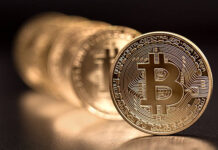Markets
Until about a month ago, market momentum for yields was to drift higher ‘by default’ at days with no market relevant news. A series of softer (or softly perceived) data since then triggered a 180-degree turn in market momentum. Central bankers’ ‘higher for longer mantra’ has been put aside. Key question for markets now is not if, but when the likes of the Fed, the ECB and even the Bank of England will start reversing part of the 2022/2023 hiking cycle even as inflation stays some distance away from (sustainably) reaching the 2.0% target. Markets now discount the ECB, the Fed and the ECB all cutting their policy rates by at least 25 bps at the June meetings at the latest. Central bankers’ comments pushing back against current market positioning (e.g. ECB Holzmann today) are simply ignored. German yields at some point this morning dropped another 7 bps (10-y), but momentum dwindled going into US trading. German yields currently are ceding between 1 bps (2-5y) and 3.5 bps (30-y). After a first attempt last week, German 2-y yield (2.94%) again holds below 3.0%. Near 2.55/58%, the 10-y yield is testing the lowest levels since mid-September. The jury is still out but question is how far long term yields still can decline from current levels, even if one subscribes current money market positioning on 2024 rate cuts. Easing global market conditions support some further intra-EMU spreads’ narrowing. The 10-y Italian spread versus German declines an additional 1-2 bps to 1.75% to be compared with levels of 2.0%+ last month. After the close of European markets, Moody’s will provide a review on Italy’s credit rating. The agency has the lowest score among major rating agencies (Baa3 with negative outlook), only one level above junk status. Looking at recent prices developments, markets don’t expected Moody’s to pull the trigger even as the Italian government scaled back its trajectory for fiscal consolidation. US yields reversed earlier intraday declines to currently trade between +3.5 bp (2-y) and minus 3.0 bps (30-y). Equities remain well bid. The EuroStoxx 50 gains + 0.85%. S&P opens little changed, but as such maintains a 2.0% weekly gain. Oil ($ 79 p/b) tries to regain some ground after yesterday’s tumbling.
On FX markets, the dollar remains in the defensive, even as recent lows in most cross rates were not extended. DXY (104.2 from 104.40) struggles not to fall below the 104 big figure. EUR/USD also gains modestly (1.087), but stays below the 1.0896 week top. The yen outperforms. The unwinding of standing yen short-positions is probably reinforcing some kind of self-feeding stops loss dynamics with USD/JPY (currently 149.7) testing the 149.20 area, compared to yesterday’s close at 150.73 and a YTD peak of 151.91 touched earlier this week. An unexpected decline in UK October retail sales (-0.3% M/M vs +0.4% expected) for sure won’t pass unnoticed at the BoE. Gilts outperform Bunds and Treasuries with yields ceding up to 6 bps (10-y). However, a constructive risk sentiment from now apparently prevents EUR/GBP forcing a sustained break beyond the 0.8755 area (for now?).
News & Views
ECB President Lagarde proposed to extend the powers of the European Securities & Markets Authority so that it more resembles the US’ Securities and Exchanges Commission. She noted that supervision of capital markets is largely a national competence with the ESMA not having broad enforcement powers similar to the ECB’s bank supervision arm. Yet, the bloc needs investor capital flows to finance an economic overhaul aimed to address challenges coming from deglobalization, demographics and decarbonization. In the eurozone and unlike in the US, banks play a more significant financing role compared to capital markets. But according to Lagarde, the upcoming financing needs outstrip banks’ lending capacity.
The Swedish Riksbank started selling foreign currency from its reserves on September 25 to hedge against currency risk. The plan is to sell $8bn and €2bn for Swedish krones within four to six months. With each selling operation, the Riksbank enters into FX swaps in order to maintain the size of its FX reserves. In the week starting October 30, the central bank sold $690 million dollar and no euros. This brings the running total amount to $3.4bn and €309 million. In other news, the central bank meets next week (Nov 23). Analysts polled by Bloomberg are split in a 6-5 vote in favour for a 25 bps hike to 4.25%. Money markets are betting that the Riksbank’s tightening cycle is over.













